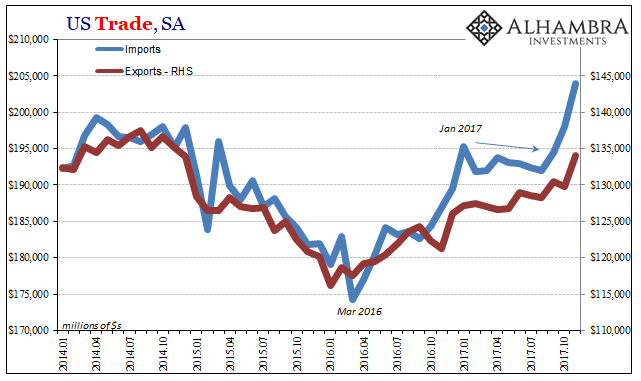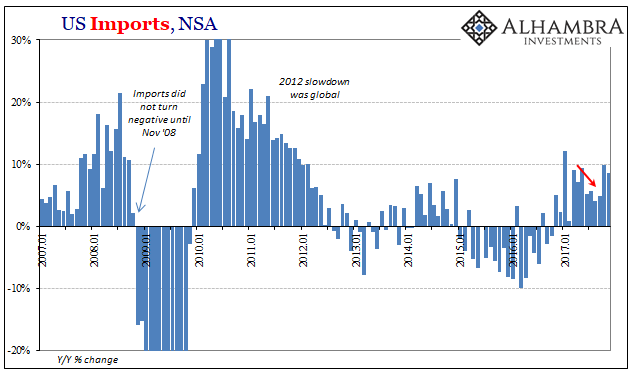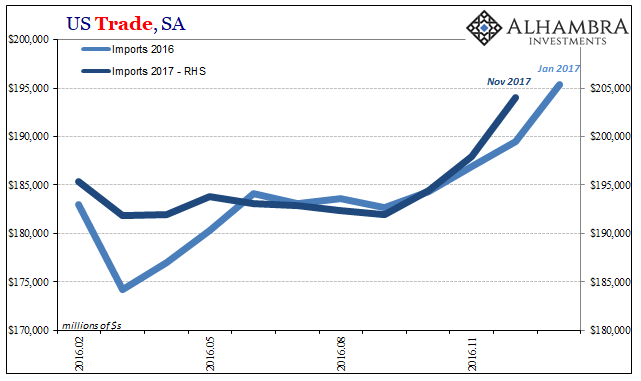According to the Census Bureau, US companies have been importing foreign goods at a relentless pace. In estimates released last week, seasonally-adjusted US imports jumped to $204 billion in November 2017. That’s a record high finally surpassing the $200 billion mark for the first time, as well as the peaks for both 2014 and 2007.
While that may be encouraging to some, there is ample to reason to believe it’s nothing more than another anomaly. For one, the Census Bureau estimates that US imports were flat and even contracting for most of 2017. From February through August, imports declined by just less than 2%.
Then, out of nowhere, US demand in September absolutely gushed. In just those three months through November, US imports increased by 6.3%, an annual rate of just over 27%. The timing, as well as the pace, suggests our answer, hurricanes, just as it did for retail sales winding up the same pattern.


Unadjusted, imports rose by just 8.5% year-over-year, a level of expansion commiserate with the 2012 slowdown economy and nothing more. It was only slightly better than the 2014 upturn, but not meaningfully different from it.
What’s interesting is that this is the second year in a row now where imports have jumped at the conclusion of the calendar year. In 2016, from November through January 2017 US imports spiked by a very similar 6.0% over those three months. The culprit then, unlike now, was obvious – WTI prices.

Given the disparity of growth rates unadjusted, as well as the seemingly isolated occurrences in both cases, it does raise the issue of seasonality with regard to that particular series. A 6% 3-month increase has been exceedingly rare going back to 2011. It has happened, in fact, only in those two instances highlighted above.
More than that, however, a spike or acceleration in growth at that level isn’t often an exceptional circumstance like we’ve seen in both 2016 and 2017. In the past, a short burst of growth even to that high degree has been consistent with an overall upward trend varying only in its speed. The issue in 2017, by contrast, is a complete change from slight contraction to unbelievable growth.











Leave A Comment